Spektrum Avian EF1 Bruksanvisning
Spektrum
Radiostyrte leker
Avian EF1
Les nedenfor 📖 manual på norsk for Spektrum Avian EF1 (8 sider) i kategorien Radiostyrte leker. Denne guiden var nyttig for 11 personer og ble vurdert med 4.8 stjerner i gjennomsnitt av 6 brukere
Side 1/8

Age Recommendation: Not for children under 14 years. This is not a toy.
NOTICE: This product is only intended for use with unmanned, hobby-grade, remote-
controlled vehicles and aircraft. Horizon Hobby disclaims all liability outside of the intended
purpose and will not provide warranty service related thereto.
NOTICE
All instructions, warranties and other collateral documents are subject to change at the sole
discretion of Horizon Hobby, LLC. For up-to-date product literature, visit horizonhobby.com or
towerhobbies.com and click on the support or resources tab for this product.
Meaning of Special Language
The following terms are used throughout the product literature to indicate various levels of
potential harm when operating this product:
WARNING: Procedures, which if not properly followed, create the probability of property
damage, collateral damage, and serious injury OR create a high probability of superficial injury.
CAUTION: Procedures, which if not properly followed, create the probability of physical
property damage AND a possibility of serious injury.
NOTICE: Procedures, which if not properly followed, create a possibility of physical property
damage AND a little or no possibility of injury.
WARNING: Read the ENTIRE instruction manual to become familiar with the
features of the product before operating. Failure to operate the product correctly
can result in damage to the product, personal property and cause serious injury.
This is a sophisticated hobby product. It must be operated with caution and common sense
and requires some basic mechanical ability. Failure to operate this Product in a safe and
responsible manner could result in injury or damage to the product or other property. This
product is not intended for use by children without direct adult supervision. Do not attempt
disassembly, use with incompatible components or augment product in any way without
the approval of Horizon Hobby, LLC. This manual contains instructions for safety, operation
and maintenance. It is essential to read and follow all the instructions and warnings in the
manual, prior to assembly, setup or use, in order to operate correctly and avoid damage or
serious injury.
Building a power system
Electric power systems need to be matched to the needs of your aircraft. There are several
important variables you must choose for your electric motor power system, and changing any
one of those variables will change how the power system performs. Estimate your aircraft's
all up weight, and begin your calculations by deciding how much power you demand for your
aircraft and your style of flying.
• If your aircraft has moderate performance (for a trainer to a moderate sport plane):
75–125 watts per pound.
• If your aircraft is high performance (for high speed, 3D or other high performance aircraft):
175–250 watts per pound.
Watts are determined by multiplying volts and amps (current). Review the motor data and
select a motor capable of delivering constant watts to meet your aircraft's needs, and is rated
to spin a propeller suitable for your airframe.
Spektrum
™
Avian
™
Outrunner Brushless Motors
Motor SPMXAM4502 SPMXAM4560 SPMXAM4595 SPMXSA4620 SPMXAM4630 SPMXAM4670 SPMXAM4675 SPMXAM4700 SPMXAM4725 SPMXAM4715 SPMXAM4745 SPMXAM4740 SPMXAM4770 SPMXAM4795 SPMXAM4796 SPMXAM4800 SPMXAM4805
Description Avian 2813-1750Kv Avian 2830-950Kv Avian 3530-
1250Kv
Avian 3536-
1200Kv
Avian EF1 Race
3545-1250kV
Avian 4240-
800Kv
Avian 4240-
1000Kv
Avian 4250-
800Kv
Avian 4260-
800Kv
Avian 4260-
480Kv
Avian 5055-
650Kv
Avian 5055-
500Kv
Avian 5065-450Kv Avian 6362-
250Kv
Avian 6362-
200Kv
Avian 8075-
230Kv
Avian 8085-
160Kv
Includes prop saver, prop adapter
and motor mount
prop saver, prop adapter
and motor mount
prop adapter and
motor mount
prop adapter and
motor mount
prop adapter and
motor mount
prop adapter and
motor mount
prop adapter and
motor mount
prop adapter and
motor mount
prop adapter and
motor mount
prop adapter and
motor mount
prop adapter and
motor mount
prop adapter and
motor mount
prop adapter and
motor mount
prop adapter and
motor mount
prop adapter and
motor mount
prop adapter and
motor mount
prop adapter and
motor mount
Diameter 28 mm (1.1 in) 28 mm (1.1 in) 35 mm (1.4 in) 35 mm (1.4 in) 35 mm (1.4 in) 42 mm (1.7 in) 42 mm (1.7 in) 42 mm (1.7 in) 42 mm (1.7 in) 42 mm (1.7 in) 50 mm (2.0 in) 50 mm (2.0 in) 50 mm (2.0 in) 63 mm (2.5 in) 63 mm (2.5 in) 80 mm (3.1 in) 80 mm (3.1 in)
Length 13 mm (0.51 in) 30 mm (1.2 in) 30 mm (1.2 in) 36 mm (1.4 in) 45 mm (1.77in) 40mm (1.57in) 40 mm (1.6 in) 50 mm (2.0 in) 60 mm (2.4 in) 60 mm (2.4 in) 55 mm (2.2 in) 55 mm (2.2 in) 65 mm (2.6 in) 62 mm (2.4 in) 62 mm (2.4 in) 75 mm (3.0 in) 85 mm (3.4 in)
Kv 1750 950 1250 1200 1250 800 1000 800 800 480 650 500 450 250 200 230 160
Constant Watts 90 160 325 500 700 592 650 850 1000 1100 1200 1300 1800 2500 1450 5000 6500
Burst Watts 120 220 390 650 1000 740 740 1480 1850 1850 2200 2200 2300 3200 2300 6500 8400
Weight 20g (0.71 oz) 54g (1.9 oz) 71g (2.5 oz) 102g (3.6 oz) 159g [5.6oz.] 125g [4.4oz] 125g (4.4 oz) 198g (7 oz) 268g (9.5 oz) 268g (9.5 oz) 298g (10.5 oz) 298g (10.5 oz) 400g (14.1 oz) 634g (22.4 oz) 635g (22.4oz) 1250g (44.1 oz) 1480g (52.2 oz)
Shaft Diameter 3 mm (0.12 in) 3 mm (0.12 in) 4 mm (0.16 in) 4 mm (0.16 in) 5 mm (0.2 in) 5 mm (0.2 in) 5 mm (0.2 in) 5 mm (0.2 in) 5 mm (0.2 in) 5 mm (0.2 in) 8 mm (0.31 in) 8 mm (0.31 in) 8 mm (0.31 in) 8 mm (0.31 in) 8 mm (0.31 in) 10 mm (0.39 in) 10 mm (0.39 in)
Voltage Range 7.4-11.1V / 2-3S LiPo 7.4-11.1V / 2-3S LiPo 7.4-11.1V / 2-3S
LiPo
11.1-14.8V / 3-4S
LiPo
7.4-14.8V / 2-4S
LiPo
11.1-18.5V /
3-5S LiPo
11.1-14.8V /
3-4S LiPo
11.1-14.8V /
3-4S LiPo
18.5-22.2V /
5-6S LiPo
18.5-22.2V / 5-6S
LiPo
18.5 - 22.2V /
5-6S LiPo
18.5 - 22.2V /
5-6S LiPo
18.5 - 22.2V /
5-6S LiPo
33.3 - 37.0V /
9-10S LiPo
37.0-44.4V /
10-12S LiPo
33.3-55.5V /
9-15S LiPo
33.3-55.5V /
9-15S LiPo
Aircraft Weight
(Sport)
225g (8 oz) 905g (32 oz) 1360g (3 lbs) 1815g (4 lbs) 1585g (3.5lb) 2676g-3583g
(5.9-7.9lb)
2040g (4.5 lbs) 2950g (6.5 lbs) 3400g (7.5 lbs) 4310g
(9.5 lbs)
4705g
(10.5 lbs)
5215g
(11.5 lbs)
6520 g
(14.5 lbs)
9070 g
(20 lbs)
11,340g (25lbs) 12.7 kg
(28 lbs)
19.1 kg
(42 lbs)
Aircraft Weight
(3D)
140 g (5 oz) 565 g (20 oz) 905 g (2 lbs) 1135 g (2.5 lbs) Not intended
for 3D
1769g (3.9lb) 1360 g (3 lbs) 1845 g (4 lbs) 2210 g (5 lbs) 2720 g (6 lbs) 2950 g (6.5 lbs) 3175 g (7 lbs) 4080 g (9 lbs) 5445 g (12 lbs) 7.711g (17lbs) 8.17 kg (18 lbs) 11.79 kg (26 lbs)
Power System
Recommendation
8 Amp ESC, 2S LiPo, 7x6
to 8x4 Slow-y Prop
25 Amp ESC, 3S LiPo,
8x6 to 10x4.5 Slow-y
Prop
35 Amp ESC, 3S
LiPo, 10x4.5 to
10x7 Electric Prop
45 Amp ESC, 4S
LiPo, 10x7 to 11x7
Electric Prop
70 Amp ESC. 4S
lipo, 8X8 Electric
prop
35A ESC, 10x5
- 13x8 Electric
Prop
45 Amp ESC,
3S LiPo, 11x8.5
to 12x6 Electric
Prop
45 Amp ESC,
4S LiPo, 12x6
to 13x8 Electric
Prop
60 Amp ESC,
6S LiPo, 10x5
to 11x5 Electric
Prop
60 Amp ESC, 6S
LiPo, 13x10 to
15x8 Electric P
60 Amp ESC,
6S LiPo, 12x6
to 13x4 Electric
Prop
60 Amp ESC,
6S LiPo, 15x6
to 15x8 Electric
Prop
80 Amp ESC, 6S
LiPo, 16x6 to 17x8
Electric Prop
80 Amp ESC,
10S LiPo, 16x8
to 18x8 Electric
Prop
80-100A ESC,
12S LiPo,17x10-
19x10 Electric
Prop
120 Amp ESC,
12S LiPo, 22x8 to
22x10 Prop
120 Amp ESC,
12S LiPo, 22x10
to 26x12 Prop
Instruction Manual
Brushless Outrunner Motor Mounts Compatible motors
SPMXAMA1200 Small 28 mm motors
SPMXAMA1205 Medium 35-42 mm motors
SPMXAMA1210 Large 50-63 mm motors
Outrunner Prop Adapters Compatible motors
SPMXAMA4903 35mm Diameter Motors
SPMXAMA4906 42mm Diameter Motors
SPMXAMA4909 50mm Diameter Motors
SPMXAMA4912 63mm Diameter Motors
SPMXAM4502, SPMXAM4560, SPMXAM4595, SPMXSA4620, SPMXAM4630, SPMXAM4670, SPMXAM4675, SPMXAM4700, SPMXAM4725, SPMXAM4715, SPMXAM4745, SPMXAM4740, SPMXAM4770, SPMXAM4795, SPMXAM4796, SPMXAM4800, SPMXAM4805
Selecting a propeller
Selecting a motor will narrow down the propeller options, but choosing the propeller and
battery can vastly affect the power system performance. Expect to test a variety of propeller
sizes to find what works best for your aircraft and flying style.
The first number on the propeller is the diameter in inches. The second number represents the
pitch and is written as the number of inches the propeller will move forward in one revolution.
Increasing either the pitch or the diameter will increase current draw. A small propeller with
large pitch may draw similar current as a larger propeller with smaller pitch, but they will have
very different flight performance. A small diameter propeller with a large pitch will deliver more
speed, at the expense of pulling power for vertical maneuvers and aerobatics. A larger diameter
propeller with a smaller pitch will not deliver as much speed, but has more pulling power for
3D aerobatics or vertical climbs.
Be aware of ground clearance as well. Having enough room to swing a large propeller often
becomes the limiting factor in choosing a power system. Before you start searching for a
suitable propeller, research the maximum diameter propeller for your airframe.
Always balance propellers before use. A well balanced propeller will improve efficiency, make
the aircraft run smoother and quieter, and will reduce wear on your motor mount and airframe.
A poorly balanced propeller can cause damage to an airframe if vibration is ignored.
Selecting a battery
We recommend Spektrum Smart batteries to go along with the power system. Changing the
cell count of the battery can vastly affect the power system performance. Review your motor
specifications for the range of battery ratings (voltage) your motor is rated for. Choose a battery
based on the dimensions of your aircraft, balance needs for your aircraft (CG), cell count
(voltage), and your estimated maximum current.
TIP: Voltage (cell count) determines how fast a motor will spin, and capacity (mAh)
determines how long the battery charge will last.
TIP: You can use the volts x current = watts equation to estimate your current at different
voltage. Watts/volts = current. Use this equation to determine your expected current with
different battery cell count (voltage).
TIP: LiPo batteries have a "C" rating. This determines the maximum current the battery
is rated to deliver. Multiply the battery's capacity (mAh) and the C rating to determine the
maximum current the battery is rated to deliver.
Selecting an ESC
Choose an ESC that is able to handle more than the maximum estimated current. Selecting the
next size up is often a wise choice to leave a buffer. Separately, consider how much current
the servos being used on your aircraft will draw if you are going to be powering the receiver
from an integrated BEC on the ESC. We recommend Spektrum Smart ESCs to pair with Smart
batteries and these Avian motors. When used with a Smart compatible telemetry receiver and
transmitter, you can determine important power system data without additional equipment. All
of the metrics you need to properly set up and understand your power system are available on
your transmitter screen with this system including current, voltage, RPM (pole count required to
be input into Smart ESC telemetry setup screen for RPM) and more.
Propeller adapters
Determine what type of propeller adapter you plan to use in preparation for mounting the
motor.
• For prop saver style mounts always use quality O-rings and ensure the rubber is in good
condition and well secured before connecting power to the aircraft.
• For collet style propeller adapters be sure the nut is securely tightened so the motor shaft
cannot slip, however further tightening is not necessary and may damage the collet.
• For directly mounted propeller adapters use a small amount of removable thread lock and
tighten the mounting screws in a star pattern to ensure it is centered on the motor.
Motor installation
Determine what type of motor mount you plan to use in preparation for mounting the motor.
Be aware of the length of mounting screws extending into the motor. Take into account the
thickness of the firewall and never allow motor mounting screws to come into contact with the
wires inside the motor (motor windings). If the mounting screws are tightened onto the motor
windings there is a good chance the windings will be permanently damaged. Damage caused
during installation is not covered under warranty.
Connecting the motor
The motor wires may be connected to the ESC in any order. If you need to reverse the motor
direction, trade any two of the three connectors.
Power System Testing
If you do not have power system data through telemetry you will need to source a power meter
(watt meter) to measure how many watts your power system is pulling and how well your
batteries are holding up voltage under load. Testing and tuning your power system may be as
simple as checking you are within the specifications, or it may come down to changing the
propeller or battery to suit your needs.
Conduct ground testing first, once performance is verified proceed to flight testing. If you
decide to increase the propeller size or battery cell count after your first flights, you will need to
go back to ground testing to check power consumption before proceeding to more flights.
TIP: A power system is only as good as the battery supplying the power. Always begin power
system testing with a fully charged battery known to be in good operating condition, and
monitor the voltage during testing for signs of the battery's aptitude to handle the power
demands. With no load the battery voltage will be highest, and it will be lowest at full throttle.
The more power (watts) you demand from the battery, the more the voltage will sag, which is
normal. Learning how to understand voltage sag is import because it is an important indicator
of a battery's health and how suitable that battery is for a given application. Batteries with
a higher C rating will have less voltage sag under power demands, which is why they can
deliver more power. At no time during testing should battery voltage drop below 3.0 volts per
cell (for LiPo type batteries, other batteries types will vary). Do the math for your battery cell
count and never let the voltage drop below that value. When a battery is new and operating
to full potential it will hold the voltage up better under load, and as a battery is used and
abused it will loose its ability to hold voltage up under load (power demands). The motor RPM
is directly related to the voltage, so if the voltage sags the motor slows down. The result of
this in real life is a new battery is powerful and seems fresh, and old batteries cannot deliver
the power they did when new and seem sluggish. If you are testing with an old battery that
cannot deliver sufficient current without the voltage sagging, you will not see the actual
performance capabilities of the power system.
Ground Testing
Warning: Always secure your aircraft prior to ground testing. Do not stand in front of
a spinning propeller or reach around a propeller to make adjustments during testing.
Failure to heed this warning may result in severe physical injury.
A power system will usually draw more power on the ground when testing static thrust than
it will when the system is being used in flight, so it is reasonable to expect it will be drawing
less power in flight if you are within the limits on the ground. Be aware, however, that airflow
for cooling won't be as good on the ground as it should be in the air (with sufficiently good
airframe design), so you need to monitor your power system temperatures during testing to
prevent overheating.
Begin testing with the battery and propeller you chose to verify the power system is operating
within the specifications of the motor, ESC and battery. You should find the watts does not
exceed the motor's rating for continuous wattage, but if it does, never exceed the burst rating
for wattage. If you exceed the continuous wattage, you should be aware of the throttle setting
where you exceed that value and be cautious not to use throttle settings above that for any
extended time period. If the wattage exceeds the burst rating for your motor during testing,
you will need to make a change to the power system to prevent overloading the motor. If
you overload the motor and continue to operate it, the motor will overheat which may cause
permanent damage. If you need to reduce the wattage your motor is pulling, you may change
the propeller or change the battery (voltage/cell count). Reducing the propeller diameter or
pitch will reduce power consumed, and going to a lower cell count battery will also reduce
power consumption.
Double check your math for watts per pound with actual values instead of estimates, and
proceed to flight testing as long as everything is aligned with your original estimates.
Flight Testing
Fly the aircraft in the manner you plan to normally fly it. If this includes high speed aggressive
flying, or 3D aerobatics be sure to land frequently and check the power system components
temperature to make sure nothing is getting hot. If you want more speed, consider reducing
the diameter and increasing the pitch of your propeller. If you want more pulling power for
aerobatics and hovering type of maneuvers consider going to a larger diameter with a smaller
pitch. If you go up with one number and down with the other you can make the change with
minimal impact on the wattage consumed. If you only go up with one of the numbers you need
to go back to ground testing to verify you aren't pulling too much power. If you want a lot more
power and have enough overhead with the wattage you are putting through the motor, you
can go to a larger cell count battery. Be aware going to a higher cell count battery will draw
a lot more power because the motor will spin faster, so you will need to go back to ground
testing and you might need to reduce the propeller size and/or pitch to keep the power system
operating within the specifications.
Produkspesifikasjoner
| Merke: | Spektrum |
| Kategori: | Radiostyrte leker |
| Modell: | Avian EF1 |
Trenger du hjelp?
Hvis du trenger hjelp med Spektrum Avian EF1 still et spørsmål nedenfor, og andre brukere vil svare deg
Radiostyrte leker Spektrum Manualer

25 Februar 2025
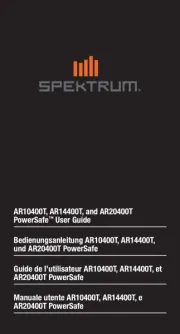
19 Februar 2025
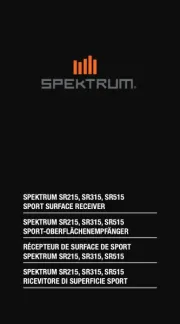
19 Februar 2025
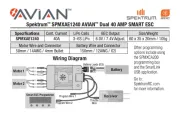
19 Februar 2025
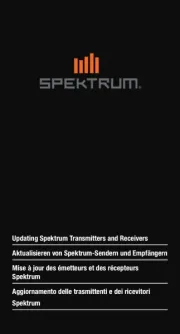
19 Februar 2025
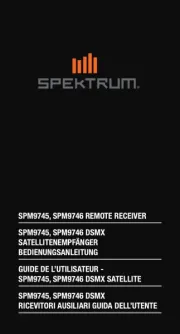
19 Februar 2025
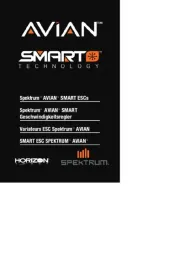
19 Februar 2025
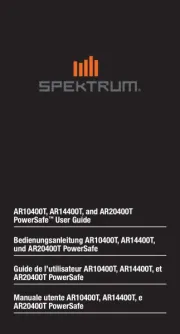
19 Februar 2025
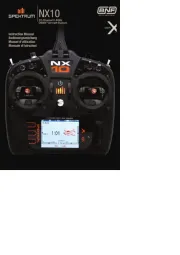
19 Februar 2025
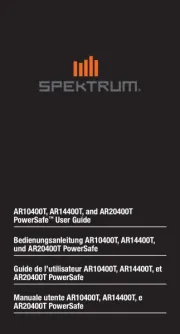
19 Februar 2025
Radiostyrte leker Manualer
- DF-Models
- Reely
- Carson
- Futaba
- Hobbywing
- Conrad
- FMS
- PowerBox Systems
- ROCHOBBY
- Blade
- Amewi
- Sharper Image
- E-flite
- Revell
- Axial
Nyeste Radiostyrte leker Manualer

1 April 2025

31 Mars 2025

31 Mars 2025

30 Mars 2025

30 Mars 2025

30 Mars 2025

30 Mars 2025

30 Mars 2025

30 Mars 2025

30 Mars 2025